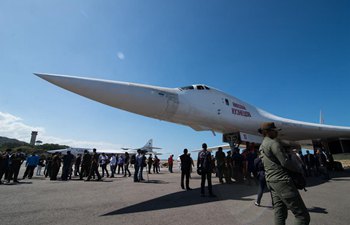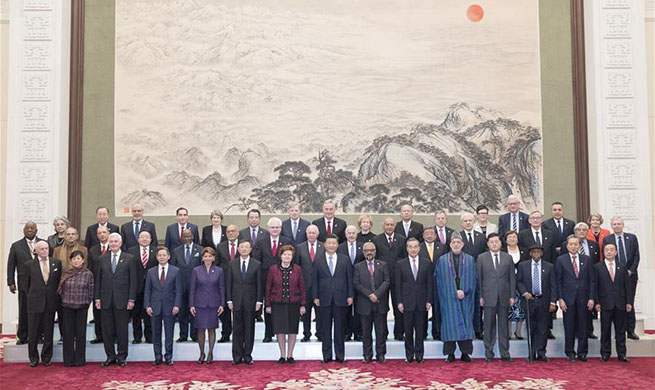MOMBASA, Kenya, Dec. 12 (Xinhua) -- Kenya has become the first country in East Africa to install a solar system at a major airport to reduce carbon emissions by large planes during their take-off.
The ground-mounted 500-kw solar power generation facility, which was launched at Moi International Airport in the coastal city of Mombasa on Wednesday, will help reduce at least 1,300 tons of carbon emissions into the atmosphere.
"It is not only a transformative development in Kenya's aviation sector, and of the continent, but also an inspiring model of how such change can best be accomplished," Olumuyiwa Benard Aliu, president of the Council of the International Civil Aviation Organization (ICAO), said in Mombasa.
Currently, planes use their auxiliary power unit (APU) powered by jet fuel or airport ground power units (GPU) fueled by diesel to run on-board systems and cooling before departing for the next flight.
But this project will provide pre-conditioned air and compatible electricity that runs on solar energy to aircraft during ground operations.
Kenya's Action Plan sets an ambitious goal to reduce carbon dioxide gas emissions from both domestic and international operations, which is expected to contribute to global efforts to minimize aviation's carbon footprint.
Aliu said the pilot project dubbed Solar at Gate was supported by ICAO, a UN agency based in Montreal, which is responsible for setting of standards that regulate aviation systems across the world and funded by EU as part of a 758 million shillings (7.4 million U.S. dollars) initiative, entitled "Capacity Building for CO2 Mitigation from International Aviation."
Gilbert Kibe, director general of Kenya Civil Aviation Authority (KCAA), said the initiative enabled the development of Kenya's Action Plan for Reduction of Carbon Dioxide Emissions from Aviation.
According to Kibe, it also identified the use of solar energy at airports as a measure to bolster global efforts to minimize aviation's carbon footprint.
"KCAA recognizes the importance of the global warming issues which took center stage at the COP24 Conference in Poland. As such we have been making aggressive efforts to address Green House Gas (GHG) emission from aviation with the financial, technical and strategic support of ICAO and the EU," he said.
The solar facility will generate 820,000 kwh per year and will curb emission of at least 1,300 tons of carbon dioxide annually.
The solar facility will be supported with funding from the ICAO-EU Assistance project.
The initiative targets 14 countries, 12 of which from the African region and two from the Caribbean region.
"It is now a reality that climate change is one of the biggest challenges facing mankind. Unfortunately, aviation has been criticized as a major contributor of carbon emissions," said Jonny Anderson, managing director of Kenya Airports Authority.
Anderson said that Kenya's aviation sector aims to operate at zero carbon emissions by 2021.













